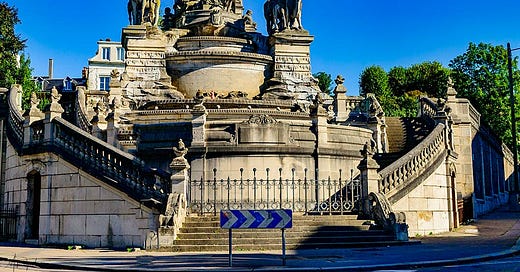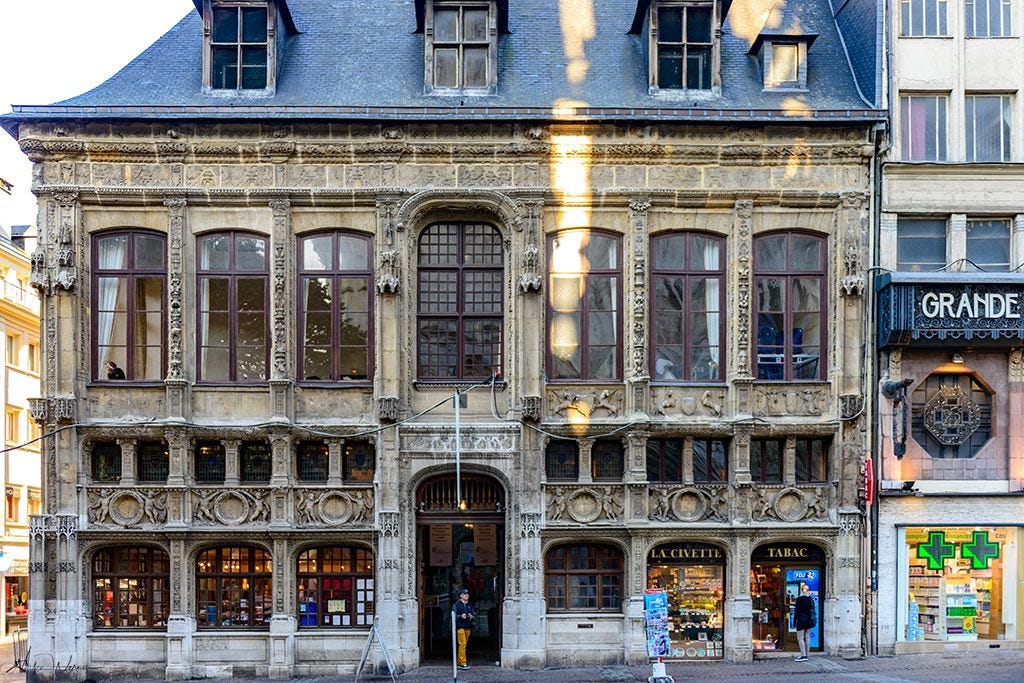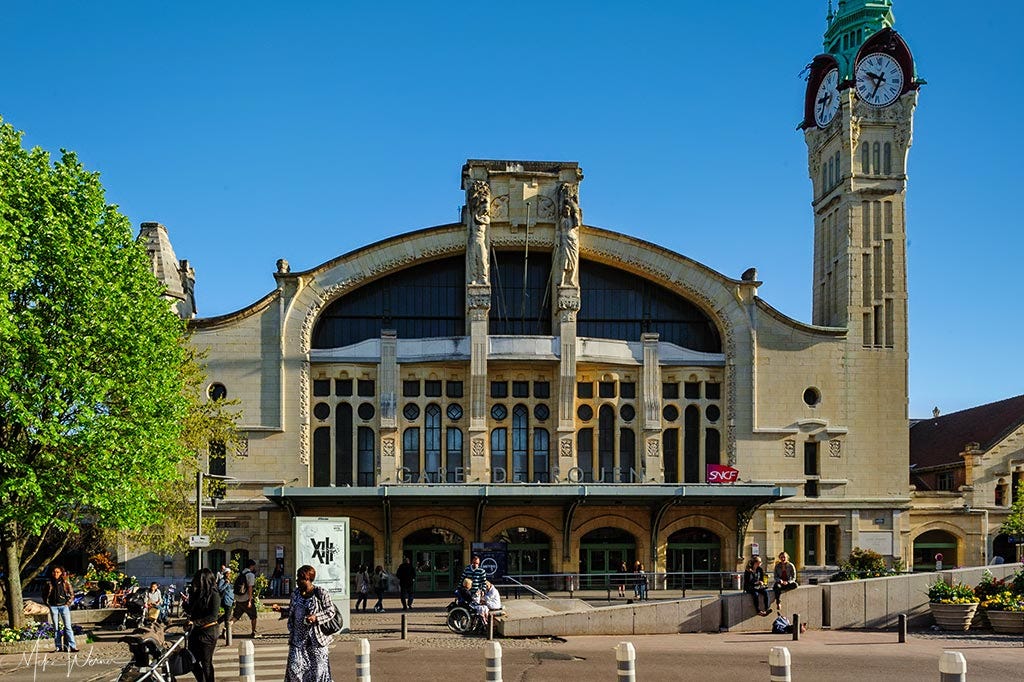NOTE: This is Part 5 of 5 articles on the introduction of the city of Rouen. A link to the next Part will appear here when published or you can subscribe to our free newsletter and receive updates directly in your inbox.
Click here to read Part 1
Click here to read Part 2
Click here to read Part 3
Click here to read Part 4.
Some Other Noteworthy Places
Fontaine Sainte Marie
The Fontaine Sainte-Marie is a historic fountain that stands as a testament to the city's rich architectural and cultural heritage. Rouen, known for its historical significance and stunning medieval architecture, is adorned with several fountains, but the Fontaine Sainte-Marie holds particular historical value.
This fountain is not just a decorative element but also part of the city’s history of public water supply systems. Historically, fountains in cities like Rouen were crucial for providing residents with access to clean water before modern plumbing systems were developed. They were often constructed with both functionality and artistry in mind, serving as communal gathering places where people would meet to collect water and socialize.
The Fontaine Sainte-Marie, specifically, features intricately designed stonework that reflects the artistic styles of the period during which it was built. Such fountains are typically adorned with motifs that include religious symbols, heraldic emblems, or local iconography, reflecting the cultural and spiritual sensibilities of the community.
In addition to its functional and aesthetic roles, the fountain also bears historical plaques or inscriptions that tell stories from Rouen’s past, adding layers of historical context that enrich visitors' understanding of the city.
Click here to see where the fountain is located on Google Maps.
City Hall (Hotel de Ville)
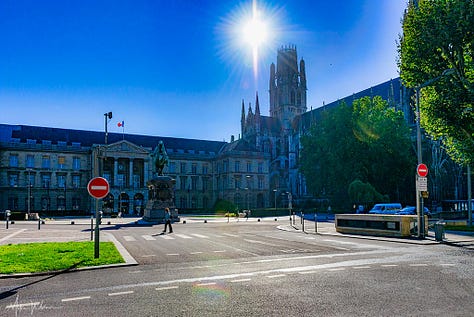
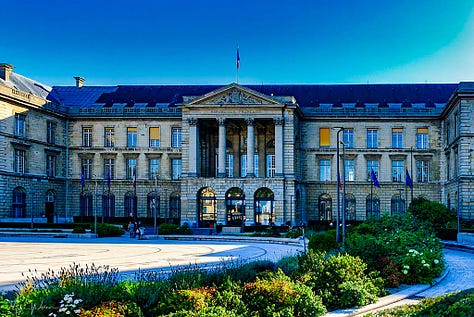
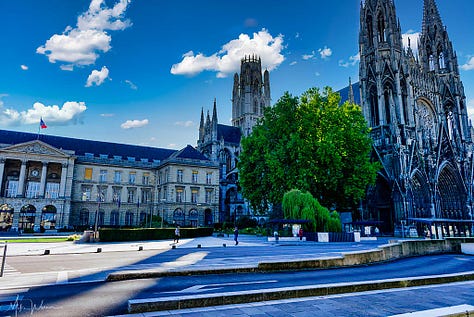
The City Hall of Rouen, located in the heart of this historic French city, is a magnificent example of architectural evolution, reflecting various periods and styles. Situated on Place du Général de Gaulle, this prominent building has been a focal point of civic life and administration for centuries.
Originally, the site of Rouen’s City Hall was part of an abbey known as the Abbey of Saint-Ouen (described in a previous article - click here to read it), dating back to the medieval period. Over time, as the city evolved and the need for a dedicated municipal space grew, parts of the abbey's properties were converted for civic use. This transition marked the beginning of the site's association with municipal governance.
The current building of the City Hall is particularly noted for its architectural beauty and historical significance. It was primarily constructed in the 18th century, during a period when classical architectural ideals were popular in France. The facade of the City Hall reflects these classical influences with its symmetry, structured lines, and the use of ornamental details that are both elegant and restrained.
One of the most striking features of Rouen's City Hall is its belfry. This tower is not only an architectural element but also serves as a symbolic watchtower over the city. Historically, belfries were significant in municipal buildings across Europe as they housed bells used to mark time and alert citizens to important announcements and emergencies.
Inside, the City Hall is adorned with artworks and historical artifacts that reflect Rouen's rich cultural and political history. The interiors contain elaborate halls where official ceremonies, receptions, and public meetings are held, showcasing the building's ongoing role as a hub of municipal activity and civic pride.
The Parc de l'Hôtel de Ville, adjacent to the City Hall of Rouen, is a serene and picturesque public garden that offers a lush, green oasis in the middle of the urban environment. This park is a beloved spot for both locals and tourists, providing a tranquil escape from the hustle and bustle of city life.
Spanning several hectares, the Parc de l'Hôtel de Ville is meticulously landscaped to provide a variety of experiences as visitors walk through its paths. It features beautifully manicured lawns, vibrant flower beds, and a range of mature trees that offer shade and visual interest throughout the seasons. These elements combine to create a peaceful setting ideal for leisurely strolls, picnics, and quiet reflection.
Click here to see where the City Hall is located on Google Maps.
Prefecture
Note: In France, a prefecture refers to the administrative center or capital of a department, which is one of the three levels of administrative divisions in the country. The concept stems from the administrative reforms initiated by Napoleon Bonaparte in the early 19th century, which were intended to streamline governance across France.
Each of the 101 departments in France, including those in overseas regions, has a prefecture. The role of the prefecture is multifaceted, serving as the seat of the prefect, who is the state's representative in the department. The prefect is responsible for local implementation of national government policies, ensuring public order, and overseeing the administration of police, emergency services, and certain economic regulations.
The prefecture also houses various administrative services essential for the region it serves. These include issuing driver's licenses and vehicle registrations, managing immigration and residency documents for foreigners, and handling other bureaucratic functions related to local and national government services.
In addition to being administrative hubs, prefectures often hold significant cultural and historical importance within their departments. They are typically located in major cities that serve as economic and cultural centers, reflecting the administrative importance and history of these locations within the French governmental framework.
The concept of the prefecture is integral to understanding the administrative organization of France, highlighting the centralized nature of French governmental structure, where national priorities are managed at a local level by appointed officials rather than elected ones, which distinguishes them from mayors and other local elected officials who govern at the municipal level.
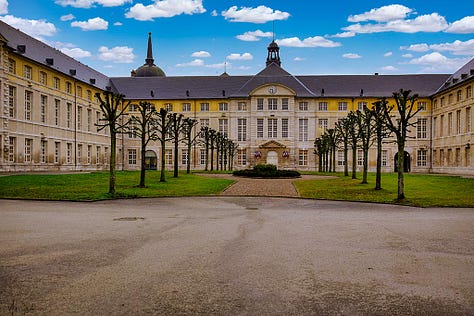
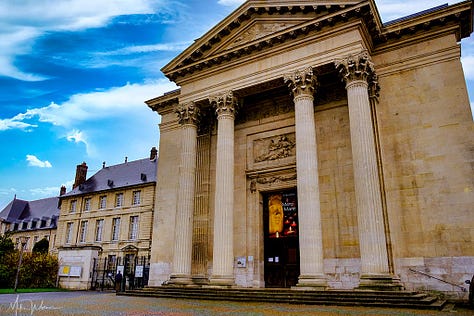
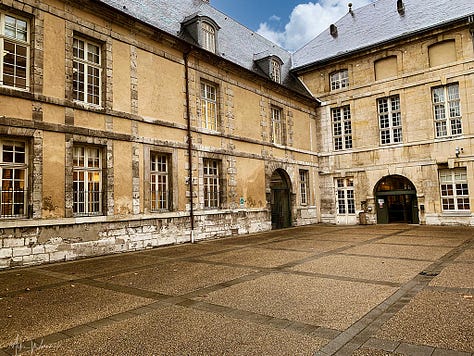
The Rouen Prefecture building is an impressive and historically significant structure, reflecting the architectural evolution and administrative importance of Rouen as a regional capital. The current building, which serves as the headquarters for the Seine-Maritime department, is situated in the heart of the city, blending historical architecture with the functional needs of modern governance.
Constructed in the latter part of the 19th century, the Rouen Prefecture building is a striking example of the architectural style of that era, characterized by its grandeur and detailed ornamentation. The facade is richly decorated, featuring classical stone work that conveys a sense of authority and stability—qualities befitting its role as an administrative center.
Inside, the building is equally impressive, with its interiors featuring period decor, high ceilings, and elaborate designs that are typical of French governmental buildings from this period. These features not only serve aesthetic purposes but also reflect the prestige and seriousness of the administrative functions carried out within its walls.
Click here to see where the prefecture is located on Google Maps
Tourist Office
The Bureau des Finances in Rouen, which houses the city's Tourist Office, is a historically significant building and a notable example of Renaissance architecture. Built in the 16th century by architect Roulland le Roux for Thomas Boyer, the general of finances for Normandy, it stands as the oldest surviving Renaissance monument in the city.
The design of the Bureau des Finances is reflective of the Renaissance style, which prioritized symmetry, harmony, and the incorporation of classical elements such as pilasters and arches. These features highlight the architectural transition that was occurring across Europe at the time, influencing how cities like Rouen evolved aesthetically and culturally.
Recognized for its historical and architectural importance, the building was designated a historical monument in 1959, the same year it was repurposed to serve as the Tourist Office. This designation ensures its preservation and celebrates its significance in the region's history.
Click here to see where the Tourist Office is located on Google Maps
Railway Station
The Rouen Railway Station, officially known as Gare de Rouen-Rive-Droite, is a key transportation hub in the Normandy region of France and is notable for both its utility and its architectural beauty.
Constructed and opened to the public in 1928, the station is an excellent example of the modernist architectural style infused with Art Deco elements that were prevalent during that period. The building is recognized for its impressive façade which features a blend of geometric shapes and ornate detailing. Inside, the station boasts large windows that allow natural light to flood the space, alongside decorative panels and elegant lighting fixtures that reflect the design trends of the early 20th century.
Historically, the station has played a significant role in the development of Rouen as a major urban center. It connects Rouen to major French cities like Paris, Le Havre, and Lille, facilitating both commuter and long-distance travel. The station is not just a point of departure and arrival; it's a place where the architectural past and the dynamic present meet, making it a point of interest for not only travelers but also architecture enthusiasts.
Additionally, the station has undergone various renovations and updates to accommodate modern technology and increase passenger comfort, all while preserving its historical charm. This balance of old and new makes Gare de Rouen-Rive-Droite a distinctive landmark in Rouen’s urban landscape.
Click here to see where the railway station is located on Google Maps
Summary
Rouen, nestled in a valley along the River Seine in Normandy, France, presents a blend of immense historical significance and architectural marvels. This geographical setting, while picturesque, contributes to its tendency to become quite polluted and uncomfortably hot during the summer months, as the surrounding hills can restrict air circulation, trapping heat and pollutants. Despite these environmental challenges, Rouen's appeal is undiminished, highlighted by its deep connection to Joan of Arc, who met her fate here in 1431. The city's ancient streets, with their medieval, half-timbered houses, lead visitors through a living museum, crowned by the spectacular Gothic Notre-Dame Cathedral, which inspired Claude Monet’s series of impressionist paintings.
Beyond its architectural and historical allure, Rouen thrives as a cultural center, especially vibrant during the summer when tourists flock to the city, adding to its bustling atmosphere. This period sees an array of festivals and events, such as the renowned Rouen Armada, which brings majestic tall ships and international visitors to the Seine’s banks. However, the increase in tourist activity can make the city feel quite crowded. Nonetheless, Rouen remains a treasure trove of cultural experiences, from its rich museums, like the Museum of Fine Arts and the Joan of Arc History Museum, to its celebrated culinary scene, which boasts traditional Norman fare. Despite the occasional discomfort caused by its climate and the summer crowds, Rouen’s rich tapestry of history, art, and cuisine continues to enchant and attract visitors from all over the world.
NOTE: This is Part 5 of 5 articles on the introduction of the city of Rouen. A link to the next Part will appear here when published or you can subscribe to our free newsletter and receive updates directly in your inbox.
Click here to read Part 1
Click here to read Part 2
Click here to read Part 3
Click here to read Part 4.

